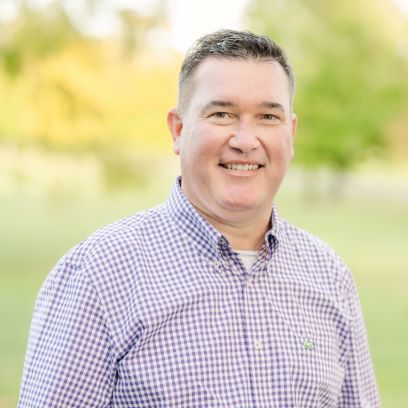
Federal agencies need to take advantage of promising new technologies. They need to be leveraging artificial intelligence today, in support of improved mission outcomes. And they can be looking ahead to Web 3, the emerging vision of next-generation decentralized internet.
The recently rebranded public sector contractor formerly known as M Corp is positioned to help organizations take those next big steps. It’s now operating as 11:59 ⏤ or one minute before midnight.
“It’s the moment right before the start of a new day,” said President and Chief Operating Officer Thomas Beyer. “It symbolizes a sense of urgency and readiness for the future. We’re going to get you ready for that next day.”
In the world of technology, moving “left to right” on the spectrum typically means shifting from decades-old legacy approaches to more modernized solutions.
“As 11:59, we are moving from left to right, demonstrating the art of the possible,” Beyer said.
Beyer came on board in November to help guide the company through its transition to a new brand image. In the past, he helped guide AI efforts at Deloitte and served as global head of digital transformation at KPMG.
“I know the founders of M Corp and I’ve followed their journey,” he said. “As a 20-year-old business, the company was ready to evolve and transform, to shift away from the traditional consulting model in order to do more forward-thinking work for public-sector businesses.”
It’s no small task to rebrand a well-established GovCon. More than just a new logo, the effort requires a new presentation and a new strategy for addressing the marketplace. The 11:59 leadership team is looking to address the challenge by focusing on the practical outcomes of innovation.

“We don’t want to pontificate about things or talk in the abstract,” said Chief Technology Officer Jim McGinn. “We want to actually take you on your journey to AI. We want to take you on your journey to the cloud. We are builders.”
The leadership team looks to this as a key differentiator. Where other advisory firms merely advise, 11:59 aims to help actually get things done.
“I have no interest in showing shiny objects that I can’t implement,” Beyer said.
McGinn says this is just the kind of help most organizations need.
“Maybe you have a strategy in place, but how do you get there? Who are the people that are going to take you there? You talk about automations: Who can build the automations?” he said. Federal agencies “talk about applications in a modern state, but they don’t have the workforce to build them.”
At 11:59, “we’re going to talk organizations through that process, and we’re going to partner with them to get there,” he said.
Beyer pointed to a recent example of how this works.
“One of our clients was doing data processing manually. We said we could do it in the cloud, taking advantage of Robotic Process Automation software,” he said. “We have saved them countless hours and business processes, just by looking at a legacy process and applying the art of the possible to that.”
That’s the kind of story 11:59 executives like to tell, as they bring the rebrand to life.
“In every conversation, we’re talking about the art of the possible, how we can take a legacy business process and enable it with the best tech available today,” Beyer said. “Clients are desperate for this. They’re desperate for access to data, desperate for easy-to-use applications that are scalable, all those kinds of things. We view this as a big opportunity for us as a mid-sized organization.”
Behind the scenes, 11:59 has assembled a workforce that aligns with this vision.
“Among our staff, curiosity is king,” Beyer said. “We have a future-driven workforce, a workforce that wants to know more than one thing and do more than one thing. That’s what enables us to deliver on the art of the possible.”
That forward-looking vision has the company leaning heavily into AI, with its potential to drive improved mission outcomes as well as savings around cost and labor. And while most organizations haven’t yet started to ponder Web 3, Beyer sees great promise in the next-gen model for the internet.
There is a tremendous challenge and opportunity for government agencies in Web 3, he said.
“Why do government agencies run all these massive systems? Why do they collect so many data? Because nobody else is doing it,” Beyer said. “What if that pulse shifts over to an individual data ownership model, enabled by a decentralized system that is actually way more secure than what we have today? Those are topics that are more on the right side of the spectrum ⏤ and they’re coming.”

